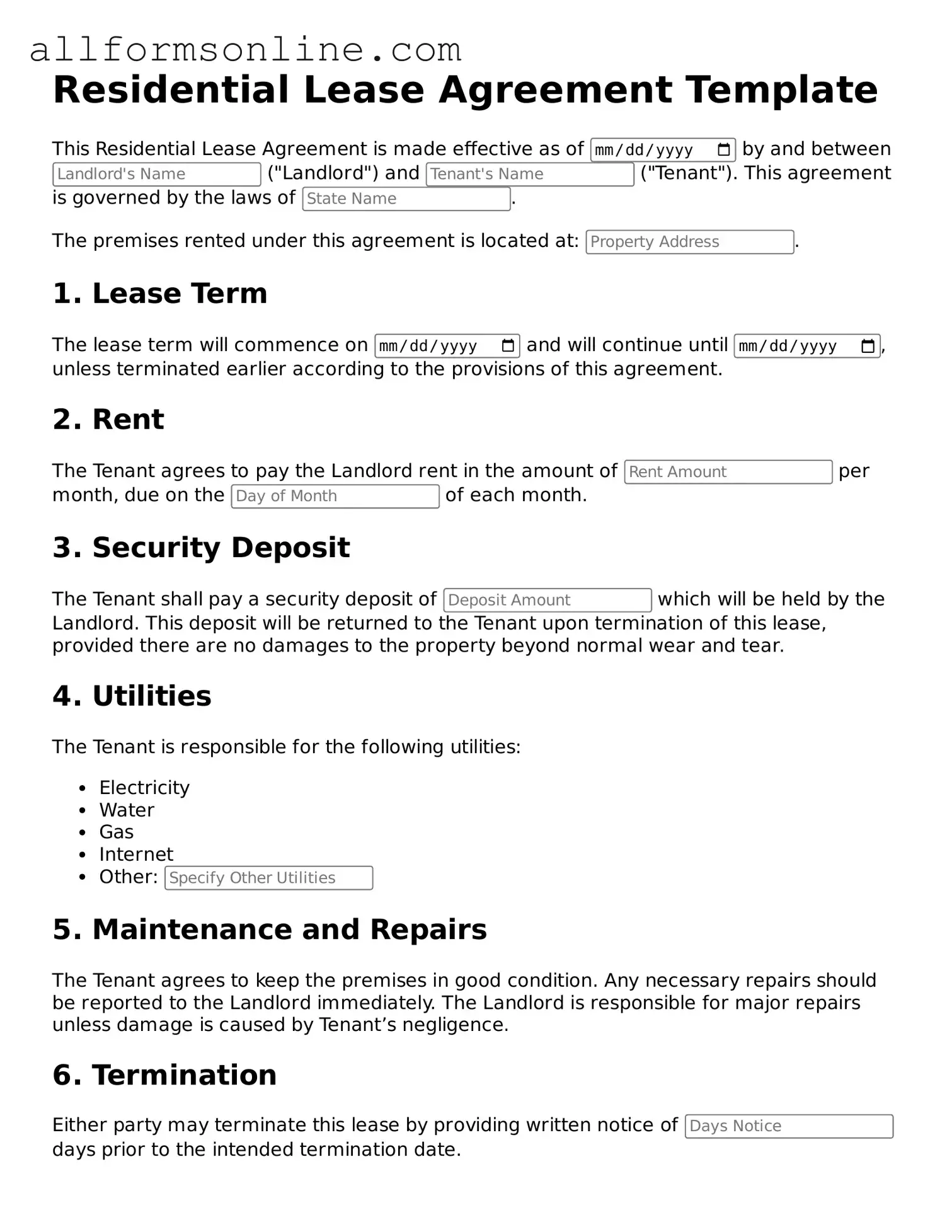What is a Residential Lease Agreement?
A Residential Lease Agreement is a legally binding contract between a landlord and a tenant. It outlines the terms and conditions under which a tenant can occupy a rental property. This document typically includes details such as the rental amount, duration of the lease, and responsibilities of both parties.
What key elements should be included in a Residential Lease Agreement?
Essential elements include the names of the landlord and tenant, property address, lease duration, rent amount, payment due dates, security deposit details, maintenance responsibilities, and rules regarding pets or smoking. Clearly defining these terms helps prevent disputes later on.
How long is a typical lease term?
Lease terms can vary widely. Common durations include one year, six months, or month-to-month agreements. Shorter leases offer flexibility, while longer leases provide stability for both landlords and tenants.
What happens if the tenant fails to pay rent on time?
If rent is not paid on time, the landlord may issue a late notice or fee, as specified in the lease agreement. Continued non-payment can lead to eviction proceedings, but landlords must follow state laws regarding notices and timelines.
Can a lease be terminated early?
Yes, but terminating a lease early usually requires a valid reason, such as job relocation or health issues. Tenants may also be subject to penalties or the loss of their security deposit unless otherwise agreed upon in the lease.
What is a security deposit, and how is it handled?
A security deposit is a sum of money collected by the landlord to cover potential damages or unpaid rent. The lease should specify the amount, conditions for its return, and the timeline for returning it after the lease ends.
Are verbal agreements valid in a lease?
While verbal agreements can be legally binding, they are difficult to enforce. It is always best to have a written lease agreement to ensure clarity and protect the rights of both parties.
What are the tenant's rights under a Residential Lease Agreement?
Tenants have the right to a safe and habitable living environment, privacy, and protection against unlawful eviction. They should also receive proper notice before any inspections or changes to the lease terms.
Can a landlord enter the rental property without notice?
Generally, landlords must provide reasonable notice before entering the property, except in emergencies. The lease agreement should specify the notice period required, typically 24 to 48 hours.
